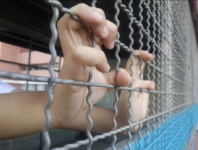Australia’s Focus on Punishing Rather Than Diverting Youths is Counter-Productive

A Queensland Children’s Court recently heard that a girl who was arrested in Innisfail in Queensland was not able to be transferred to Cleveland Youth Detention Centre in Townsville as the centre was at capacity and could not accept any more admissions.
As a result, the girl remained in the high security police watch house in Innisfail, together with a number of adult males.
The case has reignited debate about whether Australia’s approach to dealing with troubled youths is misguided and, if so, what should be done about it.
Overcrowding of youth detention centres
Police are blaming the situation regarding the detainment of the girl in a watch house on a surge in youth crime, tougher bail laws (which mean that more youths remain in custody after being charged with criminal offences) and the resulting overcrowding of youth detention facilities.
The Queensland government has, for its part, remained silent on the matter.
Perhaps part of the reason for the silence is to avert the situation whereby the media revisits the fact that, following the airing of a 2019 ABC Four Corners program which found that locking up children with adult offenders was becoming the norm rather than the exception in Queensland, the state government promised to end the situation by expanding existing detention facilities, building new ones and shifting the focus from incarceration to diversion.
That program, titled The Watch House Files examined over 500 cases where children as young as ten years old were being held with “murderers, paedophiles and drug addicts… in maximum security police watch houses”
Little has changed
Recent investigations by the nation’s public broadcaster have found that, far from eradicating the practice, the continuing focus on punitive measures rather than prevention and diversions has ensured it persists – endangering both the mental and physical well-being of some of the nation’s most vulnerable children.
Raising the age of criminal responsibility
Related to the issues of youth crime and overcrowded youth detention centres is the low age of criminal responsibility across the nation. And there have long been calls for Australia to bring the age at which young people can be criminally prosecuted, which is currently 10 years, more in line with many other nations where the age is 14 years, and to focus on diverting them away from the criminal justice system.
Not just in Queensland
The unacceptable treatment of youths in detention is certainly not unique to the sunshine state,
In that regard, the Royal Commission into the Protection and Detention of Children in the Northern Territory heard horrific evidence of young boys at the Don Dale Detention Centre being subjected to “repeated and distressing mistreatment”, being denied basic needs such as water, and legal requirements, including limits on the use of force and isolation, being routinely ignored.
Child abusers are not brought to account
To this day, no criminal charges have been laid against the prison officers responsible for the appalling abuses of those children.
And in recent times, the Banksia Hill Detention Centre in Western Australia has been in the spotlight for its run down, broken, unhygienic facilities, deplorable conditions and abhorrent treatment of the youths locked inside. Overcrowding at the facility is also a problem.
The media attention has been significant, the criticism of the Western Australian Government has also been widespread, yet children are still being sent there and the state seems to be doing little to rectify the situation.
Governments continue to fail our kids
As stated, Australia has one of the lowest ages of criminal responsibility in the world – the global average is 14 years old. The adoption of the latter age is based on science and medical research which shows that at the age of ten children’s brains are still developing and they do not fully understand the consequences and severity of their actions.
Numerous bodies of research have also shown that early contact with the justice system almost sets young people up for a life of crime, rather than deterring them from it.
Last year, around 50 organisations, including Amnesty International made submissions regarding the importance of raising the age and the dangers of early entry into the criminal system. An overwhelming 96% of these organisations highlighted the overrepresentation of Indigenous children as a predominant concern in their advocacy for lifting the age.
Indigenous youth
In Australia, indigenous children are locked up at more than ten times the rate of non-Indigenous children, despite making up a minority of the population. Of all children under 14 imprisoned between 2017-2021, 65% were Indigenous and 68% of them were locked up, despite not having been convicted of any crime.
If course, for Indigenous children the impact of being placed into juvenile detention at a young age is particularly adverse because of the systemic racism and bias in the justice system.
So far in Australia, the ACT is the only jurisdiction to moot change, promising to “soon” raise the age of criminal responsibility in the state to 12 years, with an increase to 14 years within the next couple of years. The NSW Parliament has considered doing so, but has not yet passed law reform.
Sending children to court is not the answer
Despite the Children’s Court – which aims to operate in a way that is much less formal than an ‘adult’ court and much more sympathetic to the needs of young people – those children who have to go through the criminal legal process do suffer significant impacts on their health, wellbeing, and therefore future prospects. Ultimately, the research shows that the current punitive approaches being taken in Australia simply don’t work.
And frustratingly, we do have a number of successful models which can be used as an alternative. These are programmes which focus on rehabilitation and reintegration by addressing the root causes of criminal behaviour as well as education – helping children to understand the consequences of their actions, and what it means to be a productive member of society.
So why aren’t we using them to a greater degree?
Time and again, Australian governments have proven to be painstakingly slow at adopting change, particularly when that change offers a stark alternative to what has been the ‘norm’ or ‘status quo’ for a number of decades. And this is exasperating – not only because it puts our youngest and most vulnerable community members at risk, but also because it only perpetuates the cycle of crime and trauma which has enormous social and economic cost over the long term too.
In other words – nobody benefits from the current punitive approach which keeps sending young people back to prison time and again.







